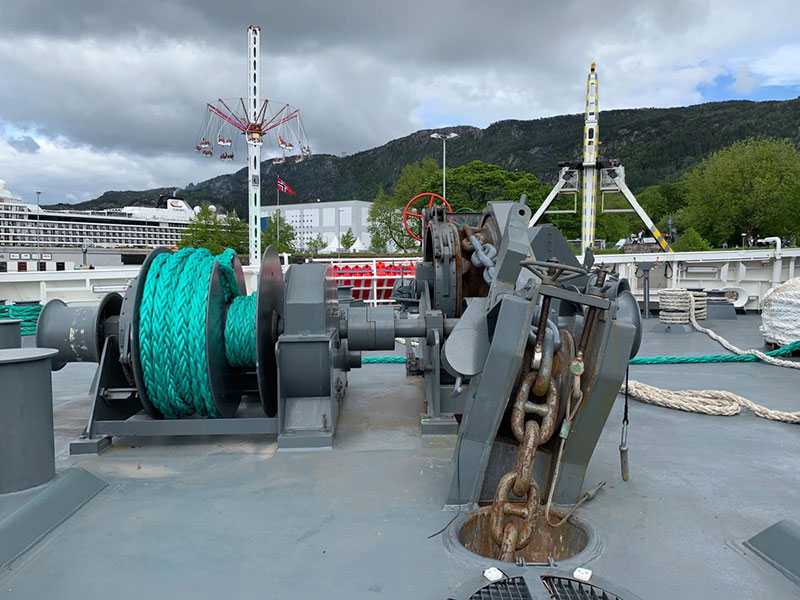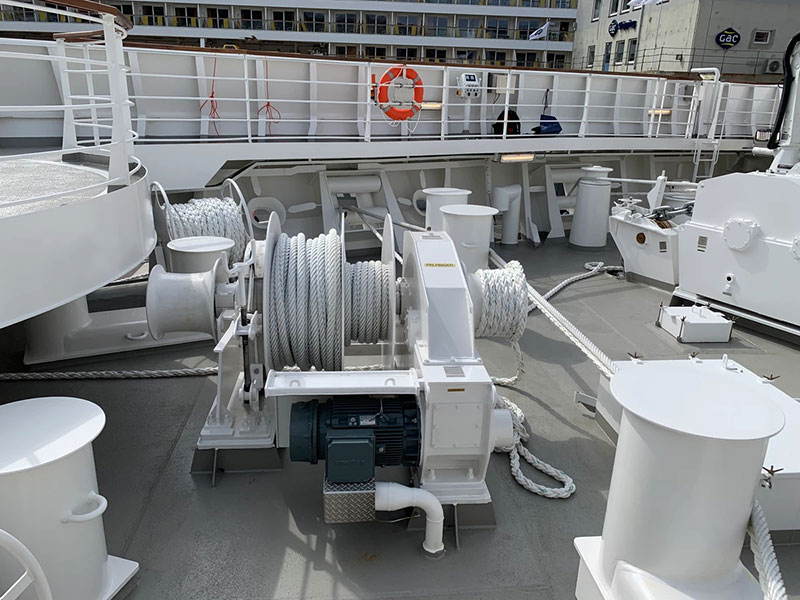Indonesia, with its vast archipelago and extensive coastline, heavily relies on maritime transportation for trade, tourism, and other economic activities. Mooring winches play a crucial role in ensuring the safe and efficient docking and berthing of vessels in Indonesian ports. In this article, we will explore the importance of mooring winches in Indonesia and discuss different mooring methods employed to secure ships, highlighting their significance in maintaining smooth maritime operations.
The Importance of Mooring Winches in Indonesia
Mooring winches (winch tambatan) are essential components in the maritime infrastructure of Indonesia due to the following reasons:

Safety and Stability
Mooring winches are responsible for securing vessels to the port or berth, ensuring their stability during loading and unloading operations. They help prevent ship movements caused by tidal fluctuations, currents, and wind, reducing the risk of accidents, collisions, and damage to the vessel, cargo, and infrastructure.
Efficient Cargo Handling
Efficient cargo handling is crucial for Indonesia’s economy, as it heavily relies on maritime trade. Mooring winches enable vessels to be securely moored, allowing for the safe and efficient loading and unloading of cargo. This enhances the turnaround time of ships in ports, ensuring smooth logistics operations and minimizing delays.
Emergency Preparedness
Mooring winches play a significant role in emergency situations such as storms, high winds, or other adverse weather conditions. They help maintain the stability and position of vessels, allowing for a quick and safe response to emergencies, including evacuation procedures or assistance to other ships in distress.
Different Mooring Methods
Various mooring methods are employed in Indonesian ports to secure ships. The choice of method depends on factors such as the type of vessel, prevailing weather conditions, water depth, and the availability of infrastructure. Some common mooring methods include:
Single Point Mooring (SPM)
Single Point Mooring is widely used for large tankers and offshore facilities. It involves anchoring the vessel to a single point on the seabed using a mooring buoy. Mooring winches for ships (winch tambatan kapal) are employed to control the tension on the mooring lines, allowing the vessel to remain in position while accommodating tidal and wave movements.

Berth Mooring
Berth mooring is a common method used in ports and terminals. It involves securing the vessel to the berth using mooring lines and winches. Mooring winches are positioned on the quay or bollards and are used to control the tension and adjustment of the mooring lines, keeping the vessel safely docked.
Mediterranean Mooring
Mediterranean mooring, also known as stern-to mooring, is employed in ports with limited space or when docking perpendicular to the shoreline is not possible. In this method, the vessel is moored parallel to the quay or jetty, and the mooring lines are connected from the ship’s stern to shore bollards or winches. Mooring winches are crucial for maintaining the tension and adjustment of the mooring lines, ensuring the vessel remains securely berthed.
Dynamic Positioning (DP)
Dynamic Positioning is a specialized mooring method used in offshore operations, where vessels need to maintain a precise position without anchoring or mooring to fixed structures. DP systems use a combination of thrusters and advanced control algorithms to counteract environmental forces and keep the vessel in a specific position. Mooring winches are essential for controlling the deployment and retrieval of the thrusters, ensuring precise positioning and stability.
Advancements in Mooring Winch Technology
To meet the demands of modern maritime operations, mooring winches in Indonesia (winch di Indonesia) have undergone technological advancements, enhancing their performance and safety. Some notable advancements include:
Electric and Hydraulic Systems
Mooring winches now often incorporate electric or hydraulic systems, offering improved efficiency, control, and reliability. Electric winches provide precise control and reduced maintenance requirements, while hydraulic winches offer high power and robust performance.
Remote Control and Automation
Modern mooring winches feature remote control systems, enabling operators to control winch operations from a safe distance. Automation features, such as load monitoring and tension control, enhance safety and efficiency, minimizing the risk of human error.
Load Monitoring and Safety Systems
Mooring winches are equipped with advanced load monitoring systems, including load cells and tension sensors. These systems provide real-time data on the tension and load being handled, ensuring safe working limits are not exceeded. Additionally, safety mechanisms such as emergency stop buttons and automatic brake systems enhance the overall safety of mooring operations.
Mooring winches play a vital role in ensuring the safety, stability, and efficiency of maritime operations in Indonesia. They facilitate the smooth docking and berthing of vessels, enabling the timely and secure handling of cargo. By employing different mooring methods and embracing technological advancements, Indonesian ports can enhance their capabilities, supporting the country’s economic growth and maintaining a reliable maritime infrastructure.